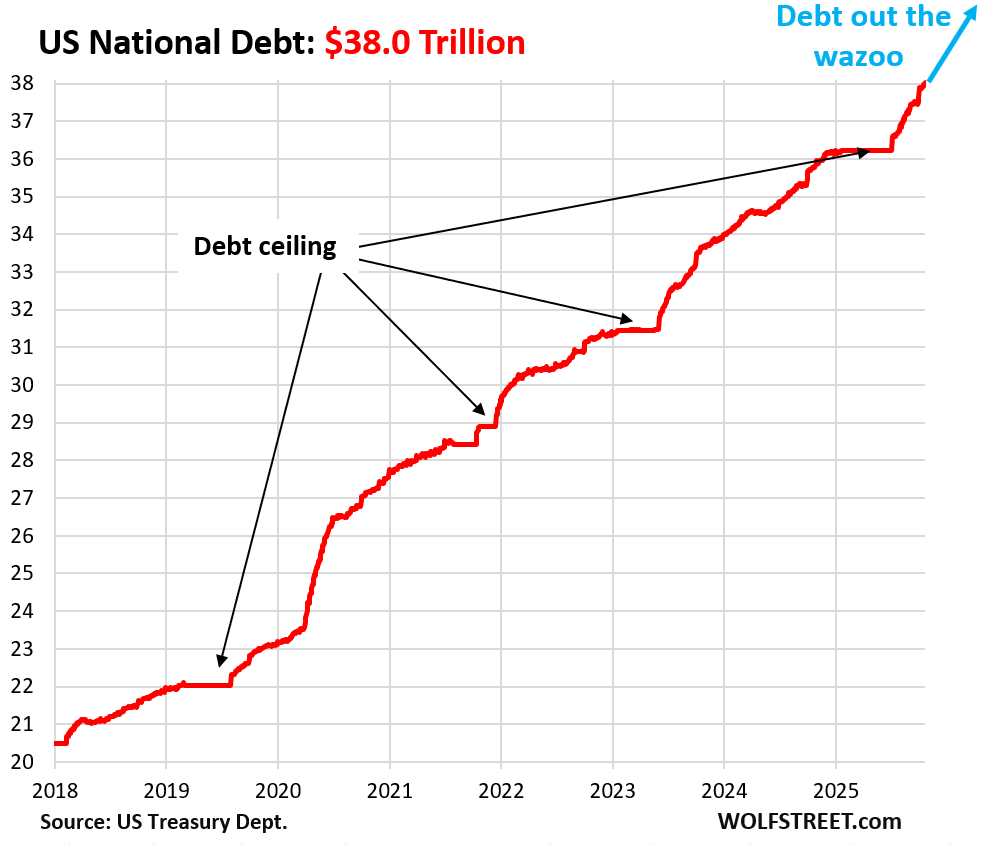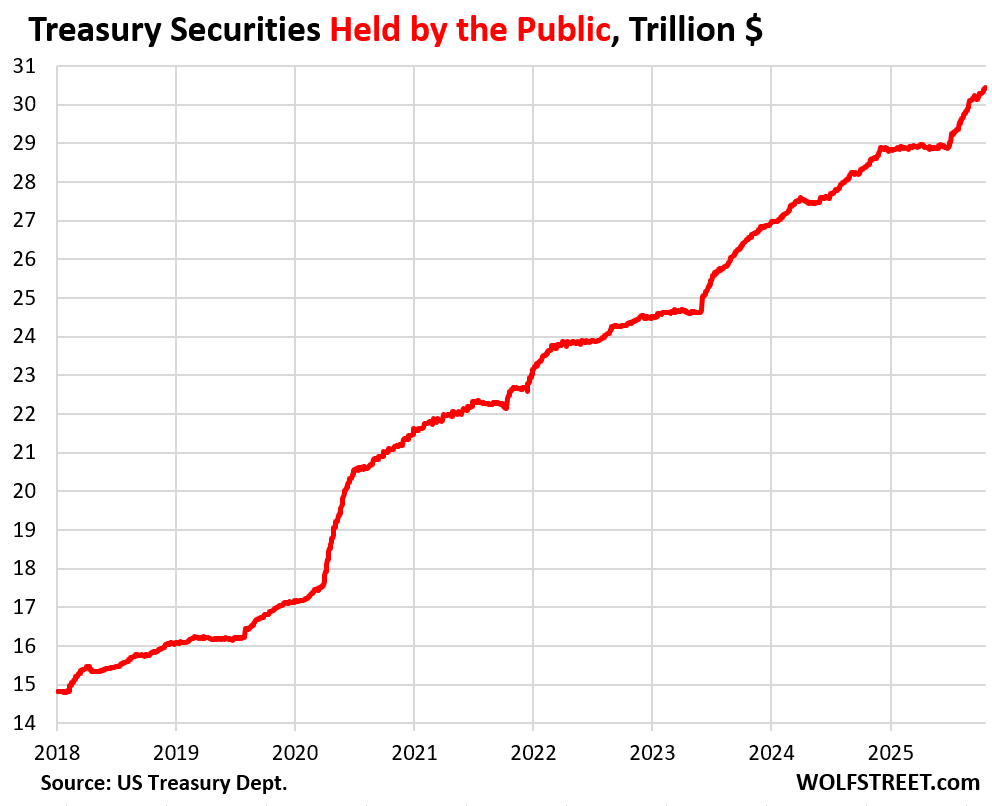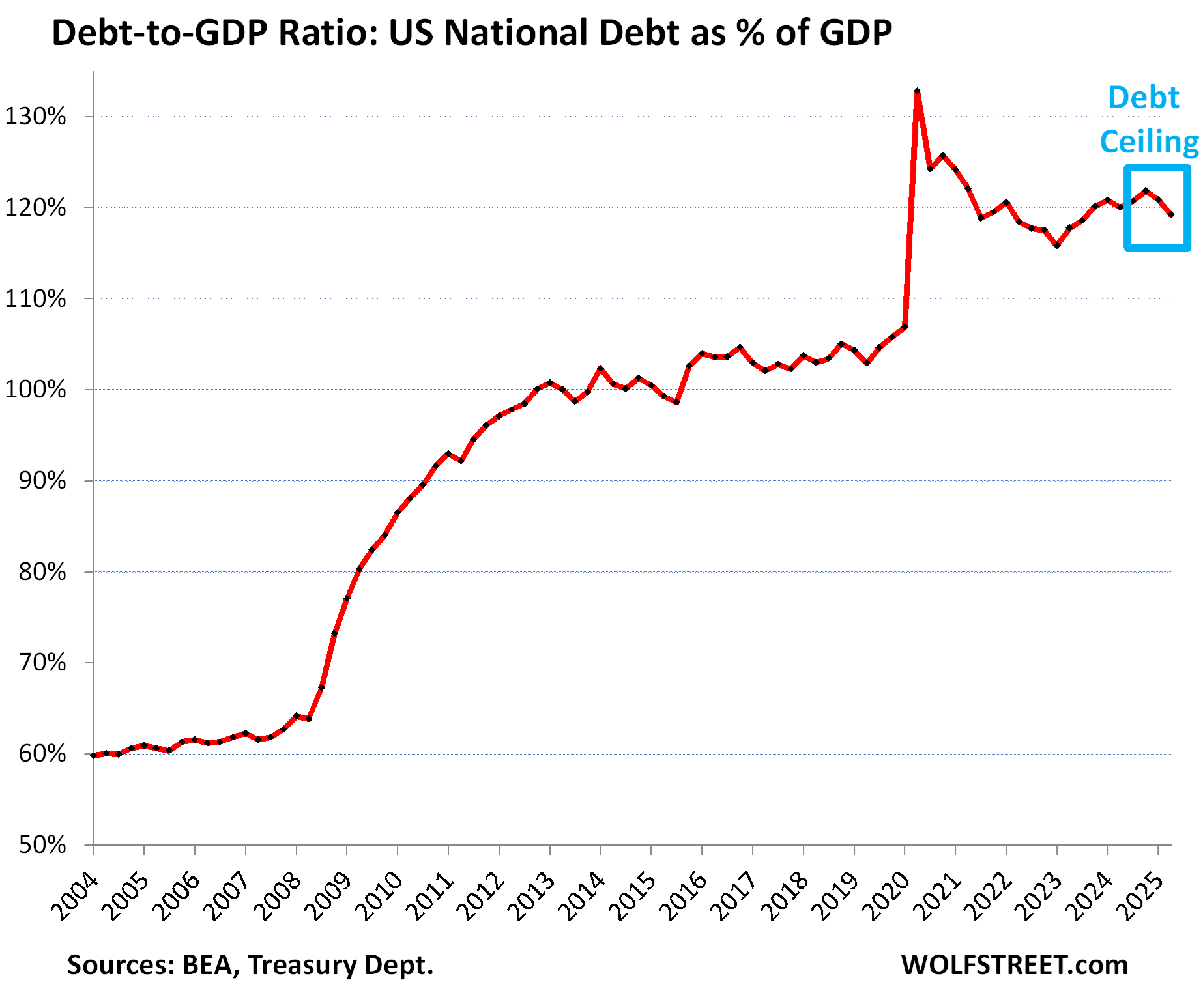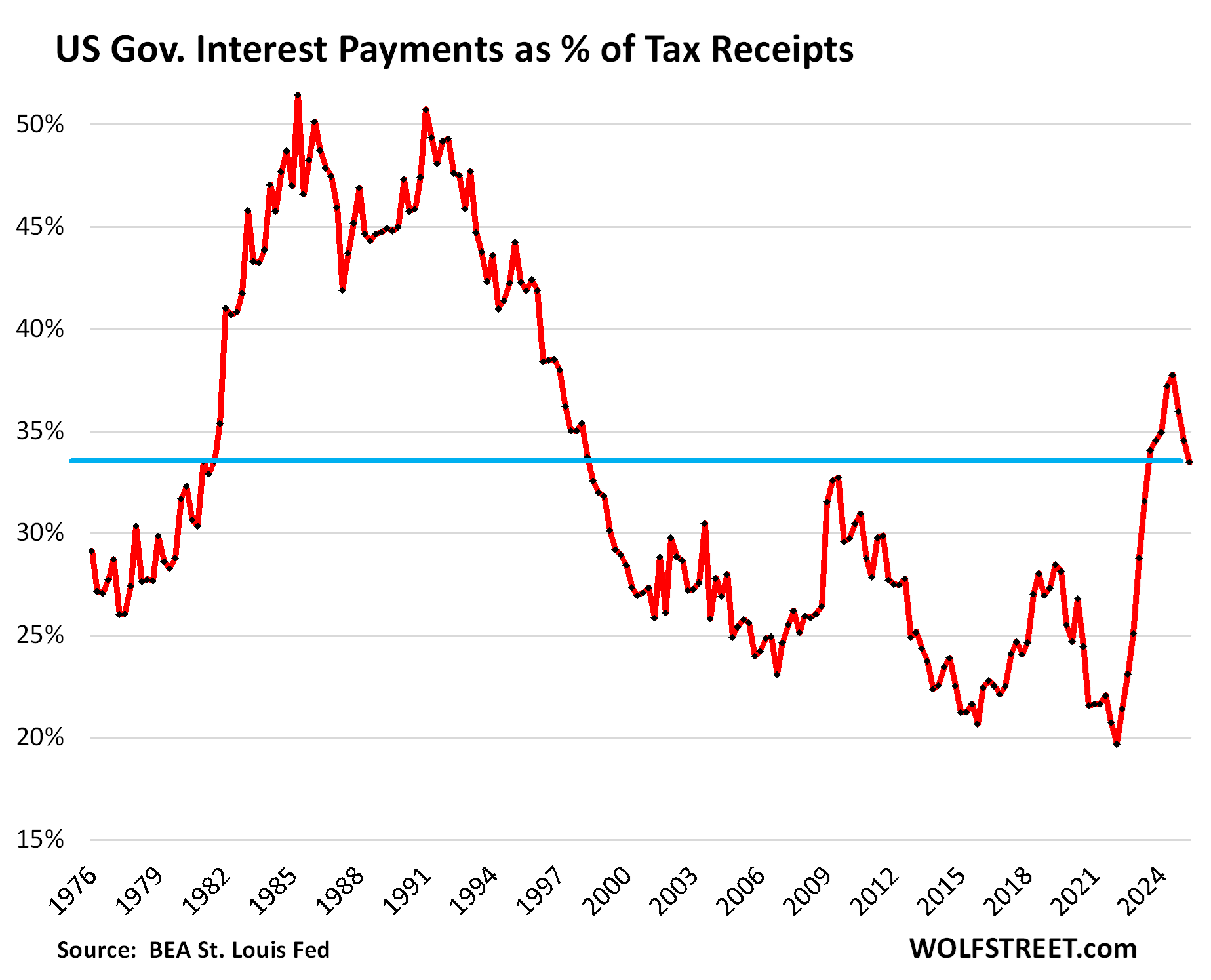But debt and interest expense don’t exist in a vacuum.
By Wolf Richter for WOLF STREET.
The US Treasury debt – all Treasury securities outstanding – jumped by another $40 billion today and thereby went over the $38-trillion mark, to $38.012 trillion to be precise, only two-and-a-half months after it had hit the $37-trillion mark on August 8, according to data from the Treasury Department today.
Since the debt ceiling in early July, so in three-and-a-half months, the debt has soared by $1.8 trillion. Trillions are flying by the window so fast they’re hard to see.
The flat spots occur during the debt ceiling, or as a WOLF STREET commenter put it so unforgettably, during the “debt floor.”

Of that $38.01 trillion in Treasury securities, $30.44 trillion are “held by the public” – they’re the publicly traded Treasury securities held in accounts in the US and around the world, in brokerage accounts, by banks, by insurance companies, at financial centers, by central banks, by the Fed, etc.

The remaining $7.58 trillion of the debt are held in federal government pension funds, the Social Security Trust Fund, and other “internal” government accounts, and they’re not traded.
Yields rise until there is sufficient demand. So there will always be demand for Treasury securities, but maybe not at sustainable yields.
But yields on longer-term securities are currently relatively low – with the 10-year Treasury yield only about 1 percentage point above the CPI inflation rate for August – indicating that there is ravenous demand for Treasuries. If there is less demand, yields will rise until there is enough demand. This happens in real time at the Treasury auctions and in the market. Higher yields create demand, but they also increases the interest expense and that becomes a problem at some point.
But debt and interest expense don’t exist in a vacuum.
The surrounding factors are the growth of the overall economy, as measured by nominal GDP, and tax receipts, which are linked. They’re essentially what pays for the interest expense (discussion and further details here).
The Debt-to-GDP ratio eased in Q2 for the second consecutive quarter to 119.3% because the debt ceiling temporarily blocked the debt from growing over the first six months this year and kept it at $36.2 trillion through Q2.
The debt-to-GDP ratio for Q3 will likely look worse, though GDP growth seems to be pretty good so far, but the debt jumped by $1.65 trillion in Q3.

Federal tax receipts jumped, powered by capital gains taxes and further boosted by the new tariffs in Q2. This measure of tax receipts, released by the Bureau of Economic Analysis, tracks the tax receipts that are available to pay for general budget expenditures, such as interest payments. Excluded are receipts that are not available to pay for general budget expenditures and are not part of the general budget, primarily Social Security and disability contributions that go into Trust Funds, out of which the benefits are then paid directly to the beneficiaries.
Interest payments by the federal government also rose but less than tax receipts.
What portion of federal tax receipts gets eaten up by interest payments? It’s bad, but not as bad as it was during the last crisis in the early 1980s.
Interest payments ate up 33.5% of the tax receipts that were available to pay for them in Q2. The ratio declined for the third consecutive quarter, driven by higher tax receipts, including from capital gains taxes and tariffs.

Enjoy reading WOLF STREET and want to support it? You can donate. I appreciate it immensely. Click on the mug to find out how:
![]()


“with the 10-year Treasury yield only about 1 percentage point above the CPI inflation rate for August – indicating that there is ravenous demand for Treasuries. If there is less demand, yields will rise until there is enough demand.”
This conclusion would be normal in a fair market but Treasury market is not fair, Government interferes the market through primary dealers all the time , they sell short term debt and use this money to buy the long term treasuries when there is less demand and decreasing the yields, skew the rates, basically they are decreasing the maturity of US debt, this is similar to kicking the can down the road, problem (of less long term demand) will come back bigger in 2-3 years.
Agree. But no one should be surprised. Both the US government and the FED have been doing this for years. That is a FED mandate.
Fascinating that the interest as a percentage of tax receipts is still relatively low compared to the ’80’s and ’90’s. The net is so full of doomers proclaiming the end times any minute now. I guess the numbers sound too big for us olds.
How long can one expect the US to spend more than it earns before it defaults on its debt or pays it back with worthless dollars through simply firing up the money printing press? Nobody appears to be asking this question
The answer is that politicians, here the Congress, will vote to do it forever. You also hit the nail on the head that there are two alternative results of this. Actual default or alternatively inflate away the debt to manageable level. Yes, that will be done with modern electronic printing press.
The end date may be the day the private sector bond market buyers ( including foreigners and foreign central banks) refuse to purchase the debt, even though nominal rates are very high, because real rates are too low or negative.
If the ONLY buyer for US Treasuries becomes the FED, then the end will be near.
You are asking the correct question. I know you are not looking for a “ date” certain. Assume you are looking for the factors or a clear set of signs.
Not sure anyone knows for sure.
I have always found this factoid interesting when speaking about the issue of debt.
This tells me that the problem is not able to be solved.
“The total net worth of all billionaires in the United States has been estimated at around $6 trillion as of 2025.
If this wealth were fully confiscated, it would fund approximately 9 months of federal government spending, based on a 2025 budget of about $6.75 trillion”.